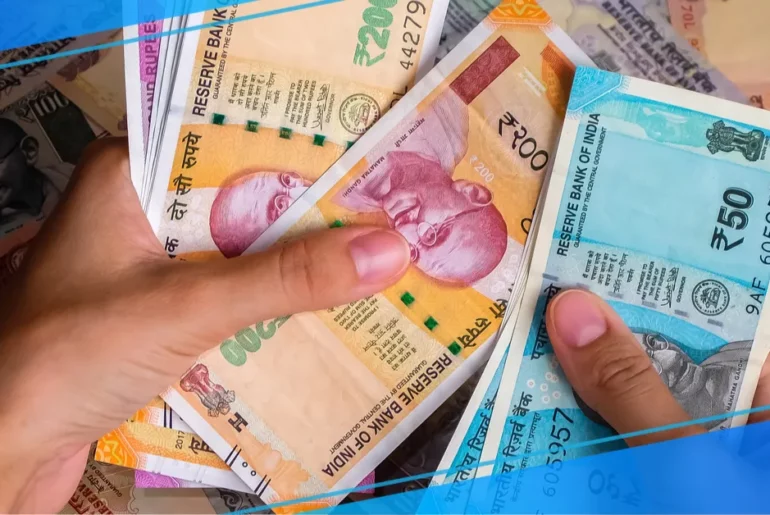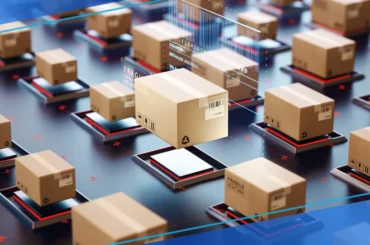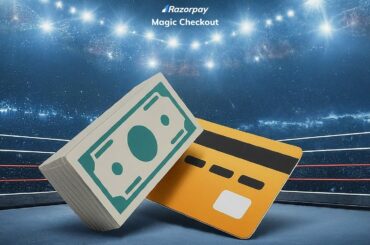Have you wondered what is the most preferred method of payment in Indian e-commerce even during the robust digital era? The answer may surprise you– it’s Cash on Delivery.
For anyone to understand how best to handle Cash on Delivery for their business, it is important to know the sentiment behind CoD. Let’s begin with a small brief on the origins of cash on delivery.
Related Read: Ecommerce Payment System?
CoD origins- Where it all began
The Indian market has been a unique use-case when compared to the rest of the world. India, being a traditionally offline marketplace, took its own sweet time to get used to digital payments.
It was not until demonetisation that Indian shoppers were forced to look for options due to the shortage of liquid cash. The Cash on Delivery origin story dates back to 1985 and has been in place for decades now. The Indian Postal System introduced the earliest known form of Cash on Delivery known as the Value Payable Post (VPP).
A VPP money order slip was attached to a given parcel. After delivery, the customer would pay the charge, and the post office then sent the money to sellers via money orders. VPP started in the 1980s and worked well with e-commerce early birds like Sify Mall, Fabmart.com and Rediff, until the mid-2000s.
In 2010, a mildly-popular e-commerce website by the name of Flipkart got its first big breakthrough with Indian shoppers after the introduction of “Cash on Delivery”. With only a 0.5% credit card usage at the time, CoD was a welcome move in the Indian market.
In the years following that, India Inc experienced a wave of change with more and more shoppers increasingly preferring to pay online. As the popularity of e-commerce giants such as Amazon and Flipkart soared, the trust in making a purchase online increased proportionally. “Cash is king” was a perfect description of the Indian market.
Fast forward to 2020 and post the invasion of a global pandemic, the Indian CoD market continues to dominate. With many Indians finally going vocal for local, many smaller businesses have come to the forefront. With that, the preference to pay via cash, too.
Also read: How To Maximize Your E-commerce Clearance Sale
The current cash preference in India is back to the pre-pandemic levels with close to 65 percent of customers still preferring to pay via cash. Cash on Delivery, for customers shopping with small and medium businesses, has become a symbol of trustworthiness, convenience and a strange sense of familiarity. And that’s why, for us Indians, #CoDZarooriHai.
The impact of CoD on the supply chain
Understanding the process behind this decades-old preference isn’t tricky. By segmenting different contributors, we can understand the dynamics of CoD. In this section, we will explore how cash changes hands and travels from the online shopper to the store owner once an order is placed.
Let’s assume that you are an online shopper who just ordered new shoes from a new-age brand (other than e-commerce giants like Flipkart/Amazon). You choose Cash on Delivery as a payment method. After a week, the consignment has reached your house via a delivery executive.
Now, the delivery executive has the type of payment recorded for every delivery and knowing that yours is a CoD order, he collects the amount from you.
It is imperative to understand that only big players like Flipkart or Amazon can afford to have their own delivery fleet. In other cases, businesses hire a third-party logistics provider to deliver their packages from the warehouse to your house.
Coming back, the delivery executive of a third-party logistics provider collects cash from all such CoD orders and at the end of the day, goes back to his delivery manager and hands over the money received. The delivery manager then reconciles the cash collected against the CoD orders.
It’s also safe to assume that there will be a percentage of Return to Origin (RTO) orders as well. Hence, he has to ensure that all RTO orders are counted in his reconciliation as well.
This money is then sent to a Central Hub (every state usually has one or two of them). The number depends on the operating model of the third-party logistics provider. This cash accumulated over a while (typically, 3-4 days or a week in some cases) is deposited into a bank account of the 3PL provider.
It is then transferred to the online retailer via a bank transfer. In rare cases, the online retailer also visits the nearest hub of a 3PL provider and collects all the order amounts in cash as well.
If you’re wondering how to include profit margins and get real-time GST inclusive & exclusive rates for your e-commerce products you can check out our free GST calculator
The buyer
The online shopper is happy simply because of the convenience that CoD offers. CoD enables the shopper to make a payment only after the package is physically delivered to him. This inevitably makes the shopper feel safer and in control. Similarly, it also allows the shopper to safely experiment with new-age brands that do not have a high brand recall with the customers.
The seller
The retailer is impacted as he faces a rigged RTO percentage with CoD and has to provide cash handling fees to the 3PL provider, which is typically greater than the payment gateway fees charged for digital payments. Also, the settlement takes at least 1-2 weeks to reach him, thus impacting his operating capital cycle.
The mediator
The 3PL provider is also happy since he receives a cash-handling charge. It’s also debatable that he makes more money with RTO orders as he gets both forward and reverse shipping charges from the online retailer. As CoD brings about more RTO orders, he makes more money with CoD.
As new stores open up online, even though CoD as a payment option may negatively impact the store owner, they may still have to offer the same to lure more revenue. This is because shoppers prefer CoD.
Some store owners have consciously taken a choice of doing away with CoD, but have seen their sales flatline due to this. Others have also sought the solution of adding a CoD fee of Rs 50 or Rs 100, but as understandable as this is, it’s not a sustainable solution.
In the end, store owners have started considering the cost associated with offering CoD as only, the “cost of doing business”.
You can do an instant GST number check using the Razorpay Number Search Tool, which helps you perform verification and authentication of a GST number for free.
Advantages of offering Cash on Delivery
There are many reasons why cash on delivery is still preferred amongst hundreds of millions of Indian shoppers. Here are some reasons why you should consider offering CoD for your online store:
Customer satisfaction
Although CoD comes with its fair share of disadvantages, customer satisfaction is good enough to trump them. One of the oldest e-commerce players in the world, eBay, started operations in India from the early 2000s but was unable to gain any significant traction.
One key reason was shoppers’ hesitation towards paying upfront. Indians were used to the “pay-after-service” mindset that reflected their preference in the offline world.
Reach
If you’re an e-commerce brand looking to spread your wings across Tier 2 and 3 cities in India, then Cash on Delivery is definitely the way to go. Tier 2 and 3 cities see a 90 per cent adoption rate of CoD as a payment method.
This is, obviously, significantly higher than metropolitan acceptance rates. Businesses can definitely expect to see a spike in their overall sales and brand reach when they offer Cash on Delivery as an option to pay, especially in small cities.
Convenience
Historically, Indians have been widely known for their affinity towards cash. For the average shopper, it may be difficult to trust and use the internet to make purchases online.
With a large amount of liquid cash simply in the market, it’s easier for shoppers to opt for cash on delivery. It’s also safe to say that convenience has a direct influence on customer satisfaction and retention.
Freedom of experimentation
Over the last few years, smaller brands have come to the forefront and are actively attracting younger consumers. With the “Vocal for Local” campaign too, many shoppers are finally mustering up to try local brands for a change.
As we can see, this wave of change taking over the new consumer, Cash on Delivery makes it a step more comfortable to pursue and ‘trust’ smaller brands. CoD ‘secures’ the customer by assuring that payment needs to be done after receiving the product.
Also read: 10 Ways to Improve Your E-Commerce Website Design to Boost Conversions
How to offer Cash on Delivery without consequences
On a broader note, there’s little doubt that, to win the Indian shopper’s heart, the seller must offer some form of Cash on Delivery to appease them. In this section, we will be looking at some of the ways by which you can offer CoD freely, yet reduce the burden of it on your operations.
How does Thirdwatch reduce CoD losses?
Razorpay Thirdwatch is India’s first solution to reduce RTO, which double up as CoD losses. As we had seen earlier, a significant share of RTO is accounted to Cash on Delivery orders. Thirdwatch provides a unique offering where we identify and filter out only the risky CoD orders so that the seller can decide on them.
Thirdwatch uses an advanced Artificial Intelligence-powered engine to achieve the said results. The Thirdwatch engine analyses over 300 parameters to identify risky parameters that signal a cancellation.
Thirdwatch uses Machine Learning and AI to profile risky orders and send the customer confirmations, send payment links for risky CoD orders and many more. Click below to get in touch with one of our experts!




